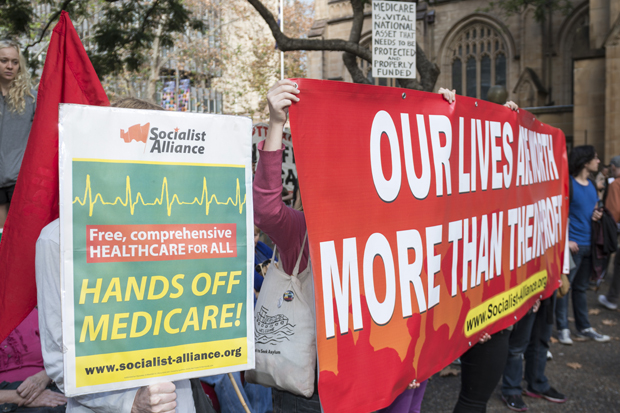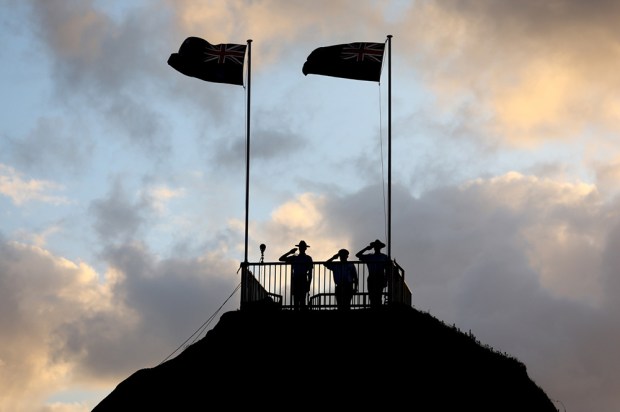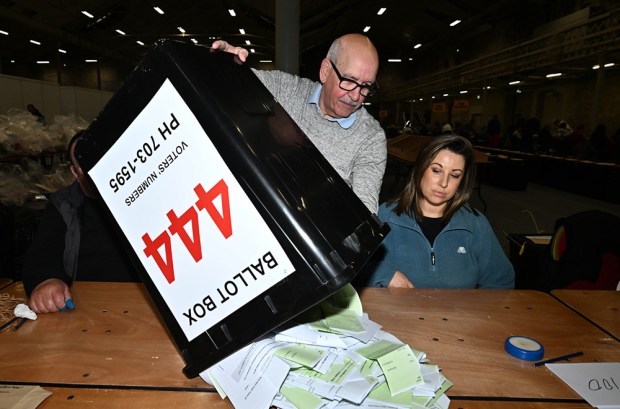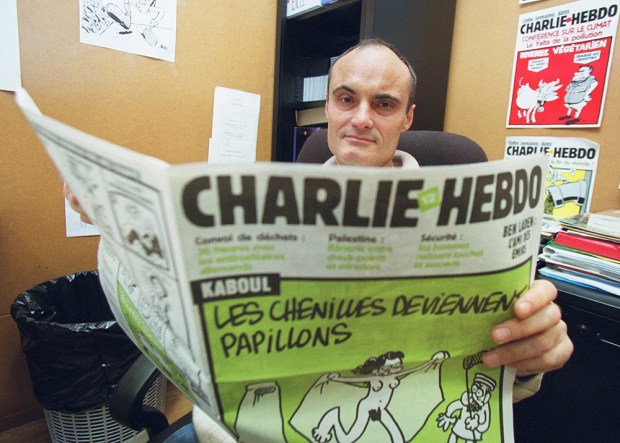For a ‘no surprises’ government there sure were a lot of surprises in the budget. The government has taken a large bite. The last thing it needed was to start a BBQ of the sacred cow of Medicare. And here was me thinking the adults were back in charge.
There is no way to sugar-coat it — the proposed Copay policy is a dead set albatross. Whoever dreamt it up needs:
a) To get out of Canberra more often and interact occasionally with The Great Unwashed, and
b) To take more of the little green pills and double up on the big red ones.
There are a myriad of problems with the current Copay policy and we can but touch on a few.
The Copay is bad politics. Unforewarned messing with MC is about as popular as a shark at the beach on 26 Jan. MC is an Australian icon — it’s not just a practical service, it resonates with our psyche. MC gives us a warm and fuzzy feeling and helps define our national identity — we care for everybody equally, punter to potentate. Health policy that does not take the iconic nature of MC into account has every prospect of ending in tears.
The Copay is based on a false premise. The rationale for the Copay is that we have an ageing population and health costs will be unsustainable so demand must be curbed by a price signal. Now I have no issue with a Copay per se, but in the context of our Medicare reality the economic line being run for a Copay just doesn’t pan out.
The overall government spend on public hospitals is about $40 billion. This equates to about $1,780 per Aussie battler per annum. This cost has risen approximately 20 per cent in real terms in the last five years. The government spend on GP care, contrastingly, is about $7 billion or $300 per battler. This has been flat in real terms for the last five years. Yep, that’s not a misprint — flat for five years.
Australia’s hospitalisation rate is among the highest in the world, double the rate in Canada, significantly higher than that in the UK and — wait for it — higher than the rate in The Great Satan. On average an admission to a public hospital costs $5,000. The Australian Institute of Health and Welfare estimates that in excess of 650,000 admissions to hospital every year could be avoided by timely access to high quality primary care. In other words, if Aussie GPs saw the battlers more often it would save a mottza. So why aren’t we even talking about this? Might it have something to do with the political influence of the people who work in hospitals? Nah, just coincidence. As currently structured Aussie general practice is not unsustainable; it is a gift that just keeps on giving to both punters and pollies. In the scheme of things chiselling GP makes no sense at all.
The Copay as currently formulated won’t work. Like all Aussies us GPs don’t like being played for chumps. We don’t like being conscripted as discount labour for the ATO and we don’t like being told it’s our job to act as an unpaid arm of the government’s welfare policy — the trade gossip sheets are on fire. I can assure you the ‘$2 windfall’ has not placated Aussie GPs. By any objective measure Aussie GPs are both clinically and fiscally awesome value. Incinerating the goodwill of GPs will invoke the immutable law that for every action there is an equal and opposite reaction (plus a bit more for expenses). Net result: Copay counterproductive.
The self-immolation goes on. The Copay includes an across-the-board cut to the GP rebate; i.e. for all private paying punters their MC refund goes down by five bucks. The two areas of concentration of private billers are in the ACT (block vote for the Comrades so it doesn’t matter) and (Barnaby, are you reading this?) in regional towns. That’ll go down a treat with the cockies. The other issue that will be problematic is doing the logistics for the scheme — ten visits to GPs, pathology and imaging. ‘All solved with strings and mirrors these days — bagatelle.’ Uhuh — just like the PCEHR, $1.4b spent and still a dud. If by some miracle of bribery the Copay gets past the Senate, the fiasco of the logistics will be in full inferno just in time for the next popularity contest. Come to think of it the Comrades would be nuts not to give this dog a run. They could go on holidays for two years, campaign on a platform of taxing the rich (to death preferably) and fully reinstating MC. All they’d have to do would be to show up at the GG’s the day after the election to collect the keys to the Lodge.
On a final note, the ‘curing cancer fund’ is just rank political cynicism. Photo opps for politicians in lab coats instead of hard hats. It should be treated with the contempt it deserves.
Like all developed nations Australia needs to curb its health costs in the context of an ageing population but we need to fish where the fish are. Opportunistic attacks on perceived soft targets are not just lazy, they are more likely than not to prove to be counterproductive.
We are too fat, too slothful, too reliant on ‘magic bullets’, hospitalised too often and we spend way too much money on acute care at the end of life that has minimal prospect of success. These are tough problems that cannot be ‘solved’. They can, however, be mitigated by well-crafted policy based on the principles of conservatism and behavioural economics, engaging all stakeholders but most especially our magnificent community of GPs.
Got something to add? Join the discussion and comment below.
Get 10 issues for just $10
Subscribe to The Spectator Australia today for the next 10 magazine issues, plus full online access, for just $10.
Michael Reid is a practising GP. He stands to partake in the $468 million Copay windfall for general practice.
You might disagree with half of it, but you’ll enjoy reading all of it. Try your first month for free, then just $2 a week for the remainder of your first year.














Comments
Don't miss out
Join the conversation with other Spectator Australia readers. Subscribe to leave a comment.
SUBSCRIBEAlready a subscriber? Log in